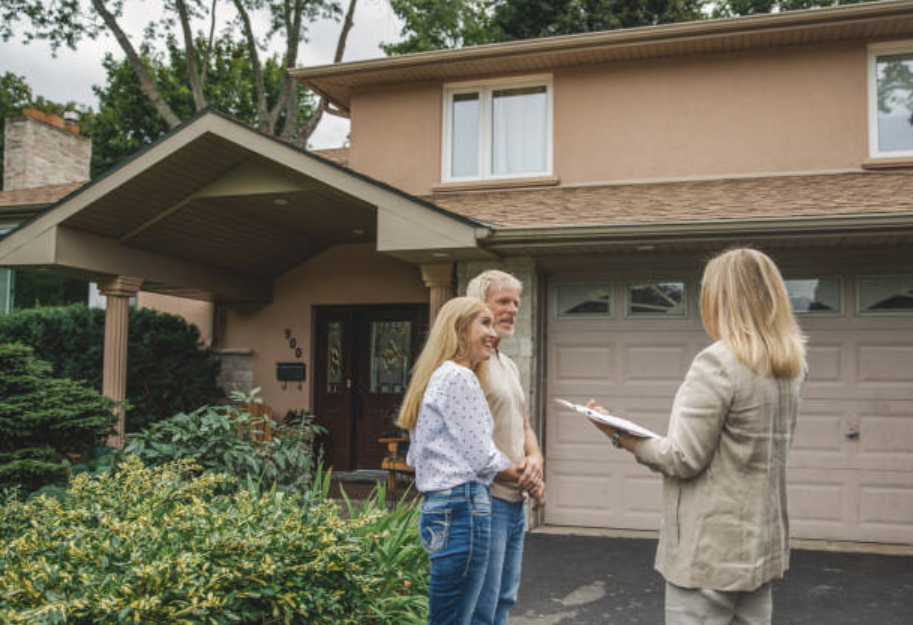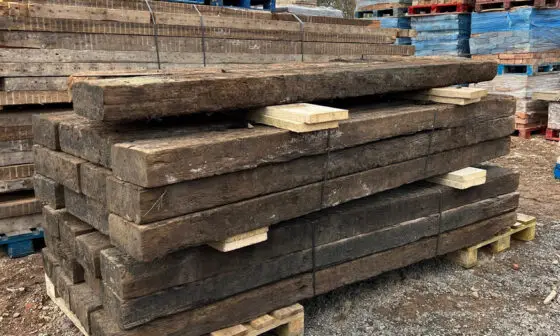
Buying property represents one of life’s biggest financial commitments. Understanding a property’s true condition before signing on the dotted line can save you thousands of dollars and countless headaches. A pre purchase building report serves as your protection against hidden defects, structural issues, and costly surprises that could turn your dream home into a financial nightmare.
This comprehensive inspection document reveals everything from minor maintenance needs to major structural problems that aren’t visible during casual property viewings. Think of it as a health check for buildings — just as you wouldn’t buy a car without looking under the hood, you shouldn’t purchase property without understanding what lies beneath the surface paint and fresh carpets.
Property buyers, investors, and even sellers benefit from these detailed assessments. The report becomes your negotiation tool, budget planner, and peace-of-mind provider all rolled into one. Whether you’re a first-time buyer or seasoned investor, this inspection can mean the difference between a smart purchase and a costly mistake.
In Hamilton and Tauranga’s competitive property markets, professional building inspections are particularly valuable. Both regions present unique challenges, from Hamilton’s varied housing stock and clay soil conditions to Tauranga’s coastal environment and rapid development. Our experienced inspectors understand these local factors and deliver bank-approved, fully insured reports that help you make confident investment decisions.
What Is a Pre-Purchase Building Report and Why Do You Need One?
A pre purchase building report documents a property’s condition through professional inspection before you exchange contracts. This written assessment identifies significant defects, safety hazards, and maintenance issues that could cost you dearly after settlement. The report covers everything from foundation problems to roof damage, giving you a complete picture of what you’re actually buying.
The inspection follows the New Zealand NZS 4306:2005 regulations, ensuring consistency and thoroughness across all assessments. Your inspector examines all accessible areas, documenting problems like rising damp, wall movement, electrical issues, and plumbing concerns. Each finding gets photographed and explained in plain English, so you understand exactly what needs attention.
Why is this pre purchase property inspection report so valuable? First, it reveals problems that sellers might not disclose or even know about themselves. Second, the documented issues become powerful negotiation tools — you can request price reductions or demand repairs before settlement. Third, the report helps you budget accurately for immediate repairs and future maintenance costs.
Consider this scenario: you fall in love with a character home in Hamilton’s established suburbs that seems perfect during the open inspection. Without a building inspection report, you might discover after purchase that the beautiful hardwood floors hide serious structural movement, or those charming bay windows leak during Waikato’s heavy winter rains. These discoveries could cost tens of thousands to fix.
Similarly, in Tauranga’s booming market, new developments and coastal properties present their own challenges. Salt air exposure, rapid construction schedules, and coastal weather conditions can create issues that aren’t immediately apparent to untrained eyes.
A standard building inspection differs from pest inspections, though many buyers choose combined services. While building reports note visible borer damage, they don’t actively search for live pests or provide specialised timber pest assessments. In termite-prone areas, combining both inspections provides comprehensive protection.
The investment in a pre purchase structural inspection typically costs a few hundred to over a thousand dollars, depending on property size and complexity. This expense pales compared to the potential savings from identifying major defects before purchase. Smart buyers view this cost as insurance against much larger repair bills down the track.
What’s Included in a Pre-Purchase Building Inspection?
A thorough pre purchase building inspection report covers every accessible area of your potential property. Professional inspectors systematically examine interior and exterior elements, documenting current conditions and identifying areas requiring attention. This comprehensive approach ensures you understand the property’s true state before making your final decision.
Interior Assessment
Interior inspections begin with structural elements like ceilings, walls, and floors. Inspectors look for sagging, cracking, water stains, and signs of movement that could indicate foundation problems. They check window and door operation, noting any sticking, warping, or seal failures that might affect security or weather protection.
Kitchen and bathroom areas receive special attention due to their complexity and potential for water damage. Inspectors examine benchtops, cabinetry, tiling, and fixtures for signs of leaks, poor installation, or deterioration. They also perform basic checks of visible electrical outlets, switches, and plumbing fixtures, noting any obvious safety concerns or operational issues.
Exterior and Roof Examination
External wall inspections focus on structural integrity and weather protection. Inspectors check for cracking, deterioration, moisture penetration, and signs of pest activity. They examine external doors and windows from outside, assessing seals, frames, and overall condition.
Roof inspections are particularly critical, as roof problems can cause extensive interior damage if left unaddressed. In both Hamilton and Tauranga, weather conditions can be challenging for roofing materials. Inspectors examine roof coverings for broken or missing tiles, rust on metal surfaces, and blocked or damaged gutters. They also assess roof safety and access, noting any immediate hazards or maintenance needs.
Ancillary structures like garages, sheds, decks, and pergolas are included in the assessment. These often-overlooked areas can harbor significant problems or represent substantial replacement costs if damaged.
Sub-Floor and Site Evaluation
Where accessible, sub-floor spaces are thoroughly inspected for dampness, ventilation problems, and structural issues. Inspectors look for signs of pest activity, inadequate ventilation, or moisture problems that could affect the building’s foundation or cause health issues. In Hamilton’s clay soil areas, foundation movement can be a particular concern requiring expert assessment.
Site inspections extend to driveways, pathways, retaining walls, and fencing within 30 meters of the building. Inspectors check for subsidence, drainage problems, and safety hazards that might not be apparent during casual viewing. They also note any items or areas that couldn’t be inspected and explain why access was limited.
The resulting pre purchase property report includes detailed written observations supported by photographs. Any limitations or areas requiring further specialist inspection are clearly identified, ensuring you have complete information for your decision-making process.
What a Standard Pre-Purchase Building Report May Not Cover
Understanding the limitations of your building defect report is just as important as knowing what it includes. Standard inspections focus on visible, accessible elements, which means some aspects of the property remain unexamined. Recognising these boundaries helps you make informed decisions about additional specialist inspections.
Inaccessible Areas and Hidden Elements
Visual inspections can only assess what inspectors can see and safely access. Areas behind walls, under fixed floor coverings, or in locked rooms typically remain unexamined. Concealed building elements like internal wall framing, hidden plumbing, or electrical wiring aren’t part of standard building inspection reports unless problems are visible from accessible areas.
Inspectors document what couldn’t be examined and explain why access was limited. This transparency helps you understand the inspection’s scope while highlighting areas that might need future investigation. If you’re concerned about specific hidden elements, you can arrange specialised inspections using techniques like thermal imaging or invasive testing.
Specialised Systems and Equipment
Standard home inspection reports don’t include detailed analysis of complex systems requiring specialist knowledge. While inspectors note obvious problems with electrical, plumbing, comprehensive assessment of these elements needs qualified tradespeople. Swimming pools, spas, elevators, and security systems also fall outside standard inspection scope.
Similarly, appliances like ovens, dishwashers, or washing machines aren’t functionally tested during building inspections. Inspectors might note visible damage or obvious problems, but operational testing requires specialist attention. Gas appliances and heating systems receive visual assessment only, with recommendations for specialist inspection if concerns arise.
Regulatory Compliance and Code Issues
Building inspection services focus on structural condition rather than regulatory compliance. Inspectors don’t verify whether building work complies with current codes or has proper permits. They assess the building’s condition based on standards applicable when it was constructed, not current requirements.
Energy efficiency ratings, accessibility compliance, and environmental assessments aren’t included in standard structural inspection reports. These specialised evaluations require different expertise and separate assessment processes. If regulatory compliance is important for your decision, arrange additional specialist consultations.
Cost Estimates and Minor Defects
Property inspection services typically don’t include repair cost estimates. While reports identify problems requiring attention, getting accurate pricing needs quotes from qualified contractors. This separation ensures inspectors focus on identifying issues rather than potentially influencing your financial decisions with incomplete cost information.
Minor cosmetic defects often don’t appear in reports unless they indicate underlying problems. Small paint chips, minor scuff marks, or superficial wear usually aren’t documented, as reports focus on significant defects affecting the property’s structural integrity or safety.
Hazardous materials like asbestos or lead paint aren’t identified unless obviously present and creating immediate safety concerns. Detecting these materials requires specialised testing beyond standard visual inspection scope.
Choosing a Qualified Building Inspector in Hamilton and Tauranga
Selecting the right inspector directly impacts your report’s quality and reliability. The inspector’s qualifications, experience, and independence determine how well your pre purchase building inspection report protects your interests. Making the right choice here can save you from costly oversights and ensure you get the detailed assessment you need.
Professional Qualifications and Licensing
Look for inspectors with relevant building industry qualifications and appropriate licensing. Ideal candidates include licensed builders, architects, or building surveyors with hands-on construction experience. These professionals understand building systems, common problems, and potential solutions from practical experience, not just theoretical knowledge.
In New Zealand, building inspection requirements vary by region, making it crucial to verify your inspector’s credentials. For Hamilton properties, Building Inspection Waikato provides trade-qualified inspectors with extensive local experience. Similarly, for Tauranga properties, their Building Inspection Tauranga service offers specialised knowledge of Bay of Plenty building challenges and coastal property considerations.
Check whether your inspector maintains ongoing professional development and stays current with building standards and inspection techniques. The construction industry constantly evolves, and experienced inspectors invest in continuing education to maintain their expertise.
Insurance Coverage and Industry Standards
Verify that your inspector carries comprehensive professional indemnity insurance and public liability insurance. This protection is essential if significant issues are missed during inspection, potentially costing you thousands in repairs. Adequate insurance coverage demonstrates the inspector’s professionalism and provides financial protection for your interests.
Ensure your inspector follows New Zealand Standard NZS 4306:2005 for residential pre-purchase inspections. This standard provides the framework for thorough, consistent assessments and ensures your report meets industry benchmarks. Inspectors who adhere to these standards provide more reliable, defensible reports that protect your investment.
Independence and Local Expertise
Choose an independent inspector rather than one recommended by real estate agents or sellers. This independence eliminates potential conflicts of interest and ensures unbiased assessment of the property’s condition. Independent inspectors have no incentive to downplay problems or rush through inspections.
Local expertise proves invaluable for understanding region-specific building challenges. In Hamilton, factors like clay soil movement, weather patterns, and local construction methods require specialised knowledge. In Tauranga, coastal conditions, salt air exposure, and rapid development create unique challenges that general inspectors might miss.
Consider the inspector’s track record and client testimonials. Experienced professionals welcome questions about their background and can provide examples of their reporting style and attention to detail.
Should you attend the inspection? Many inspectors encourage client presence during assessments. This allows real-time discussion of findings and helps you better understand the property’s condition. However, respect the inspector’s need to work systematically and avoid disrupting their process.
Using Your Pre-Purchase Building Report for Negotiation
Your building inspection report becomes a powerful negotiation tool once you understand how to interpret and apply its findings. The documented evidence of defects and potential problems gives you substantial leverage in price discussions and repair negotiations. Smart buyers use this information strategically to protect their investment and achieve better purchase terms.
Understanding and Prioritising Issues
Start by carefully reviewing the entire report with your inspector if possible. Reports typically categorise defects as major or minor, helping you understand which issues need immediate attention versus those that can wait. Major defects affecting structural integrity or safety require priority attention and stronger negotiation focus.
Minor defects, while individually small, can add up to significant costs over time. Document all issues but focus negotiation efforts on the most expensive or urgent problems. This strategic approach helps you achieve meaningful concessions without overwhelming sellers with lengthy defect lists.
Create a prioritised action plan based on the report’s findings. Immediate safety hazards need addressing before settlement, while cosmetic issues might influence price negotiations without requiring pre-settlement repairs.
Strategic Negotiation Approaches
Armed with documented evidence, you can approach negotiations from a position of strength. Request price reductions reflecting repair costs, or ask sellers to complete specific repairs before settlement. The report’s photographs and detailed descriptions make it difficult for sellers to dispute identified problems.
Consider different negotiation strategies based on market conditions and your priorities. In competitive markets like Hamilton and Tauranga, you might focus on the most critical issues to avoid losing the property. In buyer’s markets, comprehensive negotiation covering all identified defects might be appropriate.
Don’t forget to factor in the inconvenience and time required for managing repairs. Even if sellers agree to fix problems, you’ll need to coordinate work and potentially deal with delays or quality issues. Sometimes accepting a lower price and managing repairs yourself provides better outcomes.
Making Final Decisions
The report provides the objective information needed for your final purchase decision. If defects are extensive or repairs costly, you might decide the property isn’t worth the investment, even at a reduced price. This decision-making power protects you from problematic purchases that could become financial burdens.
Keep detailed records of all findings and any agreements reached with sellers. These documents prove valuable for future reference, insurance claims, or legal issues that might arise after settlement. They also help you plan ongoing maintenance and budget for future repairs.
Remember that your inspection was conducted at a specific point in time. Property conditions can change, especially if significant time passes between inspection and settlement. Consider arranging follow-up inspections if delays occur or concerns arise about changes to the property’s condition.
Pre Purchase Building Reports: Key Information for Informed Decisions in Hamilton and Tauranga
A pre purchase building report stands as your strongest defense against costly property surprises and provides the foundation for confident buying decisions. This professional assessment reveals hidden problems, supports effective negotiations, and helps you budget accurately for your property investment. The small upfront cost of a thorough inspection can save you thousands of dollars and countless headaches after settlement.
Smart property buyers in Hamilton and Tauranga recognise that comprehensive building inspections are investments, not expenses. The detailed information provided by qualified inspectors empowers you to negotiate from strength, avoid problematic properties, and proceed with purchases that truly serve your interests. Whether you’re buying your first home or adding to an investment portfolio, professional building assessment protects your financial future.
With both regions experiencing significant growth and development, professional building inspection services have never been more important. Local expertise combined with industry-leading standards ensures you receive the comprehensive assessment needed to make informed property decisions in these dynamic markets.


